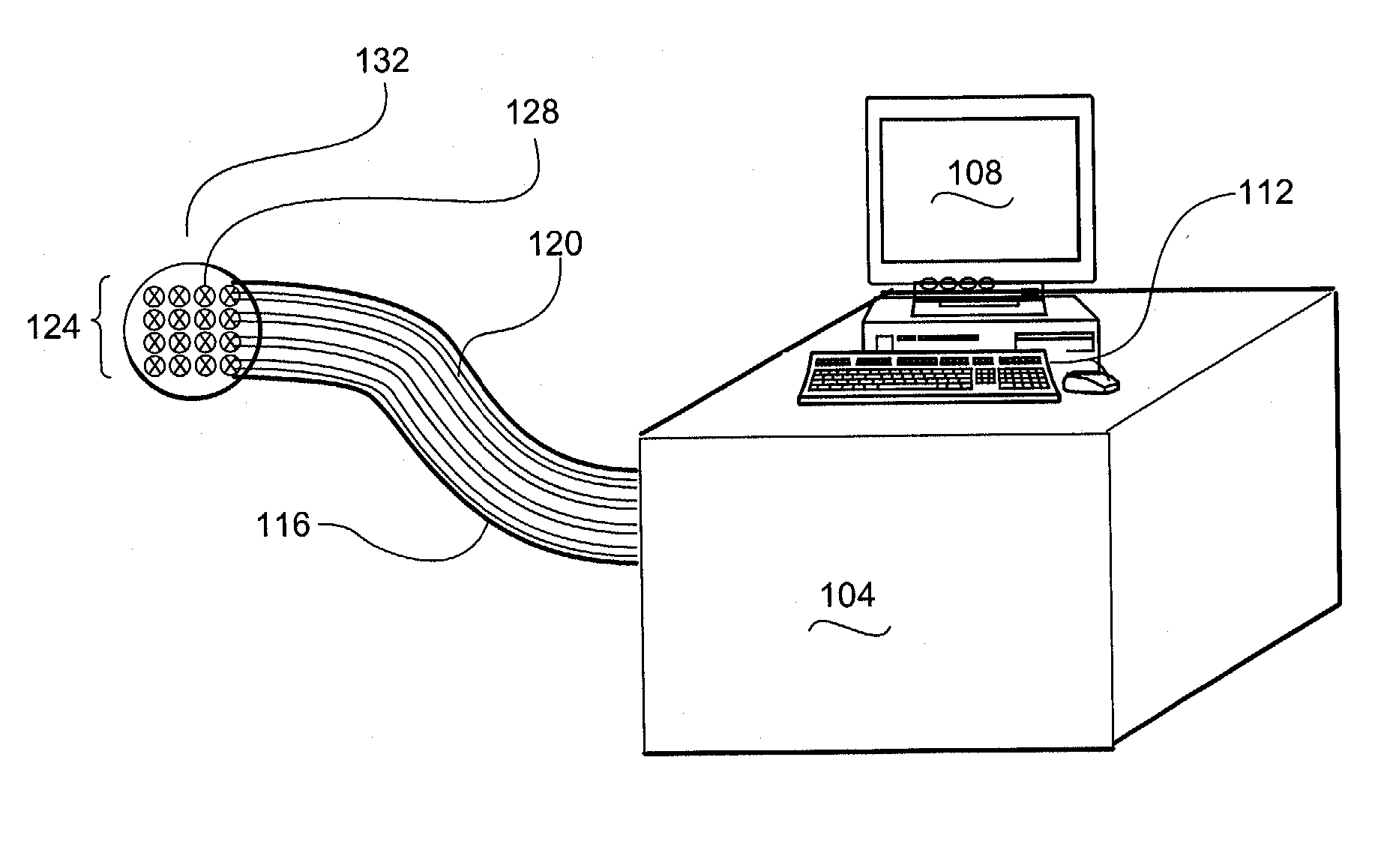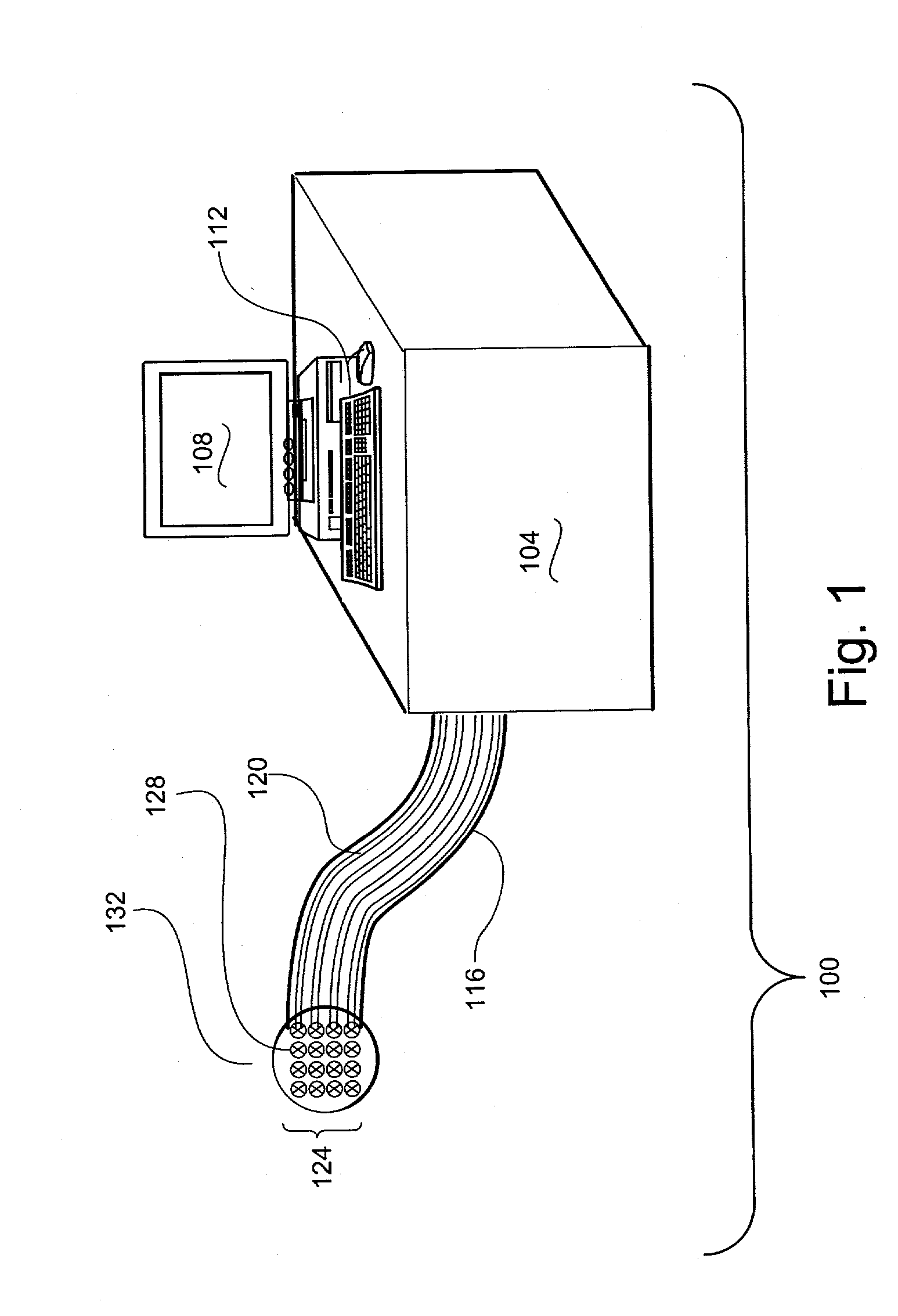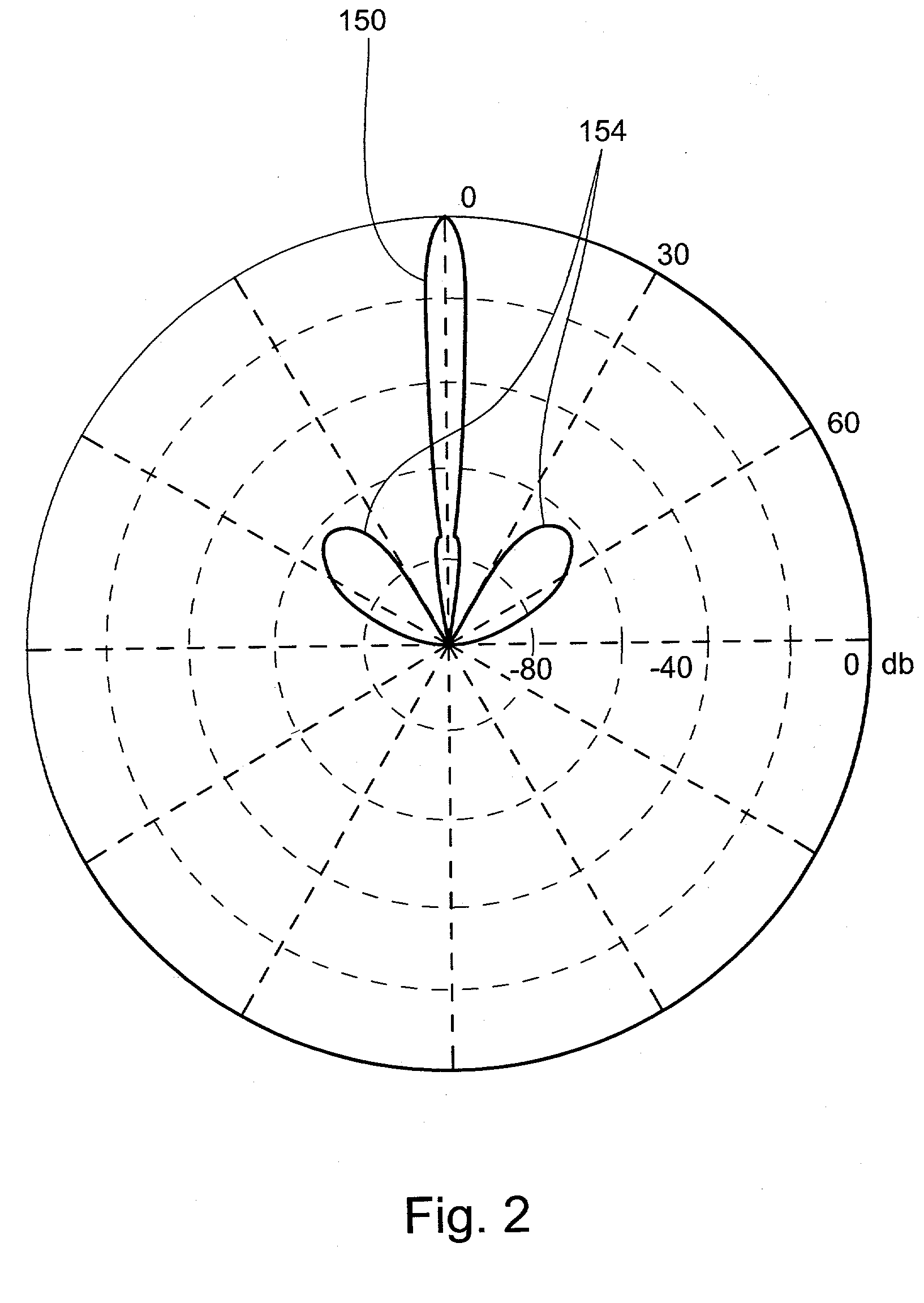Two-dimensional ultrasonic array with asymmetric apertures
a two-dimensional ultrasonic array and aperture technology, applied in the field of two-dimensional ultrasonic arrays with asymmetric apertures, can solve the problems of destructive interference outside the target, transmission and reception of unwanted energy, and more difficult to detect subtle differences in the target, so as to avoid the costs and compromises inherent in the
- Summary
- Abstract
- Description
- Claims
- Application Information
AI Technical Summary
Benefits of technology
Problems solved by technology
Method used
Image
Examples
first embodiment
[0074] FIG. 4 describes the present invention.
[0075] The sparse array 400 is centered around a center axis 404. (Compare with FIG. 7 that has two centers, one for receive and one for transmit.) The sparse array has an inner transmit array 410 and an outer receive array 420. The inner transmit array is comprised of a series of transmit elements 414. The transmit array is located in the region defined by a circle with midpoint at the center axis 404 and outer perimeter defined by radius R.sub.(TO) 418. In the preferred embodiment the region of the transmit array is fully populated, that is the transmit elements are spaced at no more than approximately 0.5 lambda apart.
[0076] The outer receive array 420 is comprised of a series of receive elements 424 located in an annular area around center axis 404 between the radius R(Ti) and R.sub.(TO). In the preferred embodiment the region of the receive array is fully populated, that is the receive elements are spaced at no more than approximate...
PUM
 Login to View More
Login to View More Abstract
Description
Claims
Application Information
 Login to View More
Login to View More - R&D
- Intellectual Property
- Life Sciences
- Materials
- Tech Scout
- Unparalleled Data Quality
- Higher Quality Content
- 60% Fewer Hallucinations
Browse by: Latest US Patents, China's latest patents, Technical Efficacy Thesaurus, Application Domain, Technology Topic, Popular Technical Reports.
© 2025 PatSnap. All rights reserved.Legal|Privacy policy|Modern Slavery Act Transparency Statement|Sitemap|About US| Contact US: help@patsnap.com



